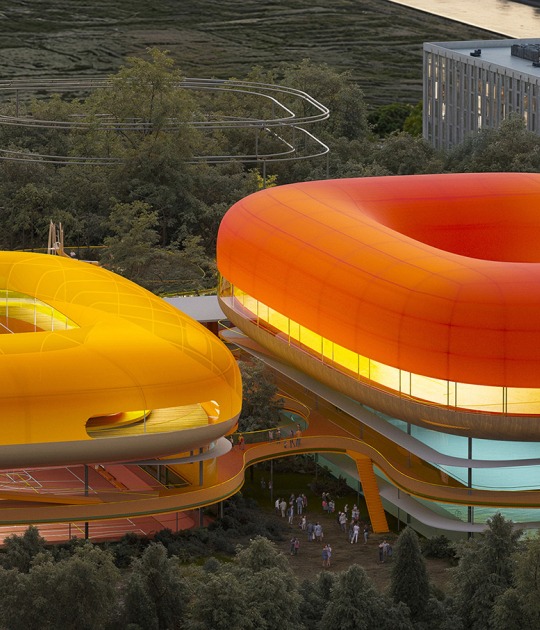Monochrome's project focuses on the rehabilitation of a social housing complex in very poor condition in the Extremaduran city of Almendralejos. The proposal proposes a recycling solution for what already exists, updating houses that have become obsolete with a simple and sustainable proposal: an exterior structure attached to the façade to expand the living space and organize the public space.
Addressing the issue of the migration of populations attracted by seasonal jobs in the countryside, which have been creating a complex and diverse population that needs to improve their urban settlement conditions, with a real and renewed integration of their homes.
 The incredible story of the seasonal worker who found his home in Almendralejo. Image courtesy of MONOCHROME Estudio.
The incredible story of the seasonal worker who found his home in Almendralejo. Image courtesy of MONOCHROME Estudio.
Description of project by MONOCHROME
The winning project for the city of Almendralejo addresses the issue of seasonal workers from an architectural perspective. It is a refurbishment of a social housing complex in very poor condition for which a recycling solution is proposed for what already exists, updating some houses that have become obsolete with a simple and sustainable proposal: an exterior structure attached to the façade to enlarge the living space and order the public space
Almendralejo is a population that lives mainly from the agricultural sector, with a fluctuating population in the months of harvesting the fruit and whose social reality is decisive as the starting point of our proposal. On the one hand, we find the traditional population and residents of the neighborhood, and on the other hand, the migrant population that ranges between 7,000 and 9,000 people, made up mostly of Romanian gypsies who come during the grape harvest and harvest season.
We want to promote the citizen initiative with a negotiation table, where both residents and migrants will be, accompanied by all those involved in the improvement: city council, owners, social agents, etc. Reconciliation between the traditional population and temporary migrants is the primary objective, through a "social condenser" with two scales for a global solution:
- ARCHITECTURAL: a new integrating block that includes NEW PUBLIC/SEMI-PUBLIC SERVICES.
- URBAN PLANNING: regulating TRAFFIC; creating GREEN CORRIDORS and a CLIMBING INTEGRATION system with new "landmark" elements that make the San José neighborhood unique, resorting to the lost industrial identity, the brick chimneys, heritage of an industrial past.
The architectural proposal is based on the recycling of the current blocks, and is divided into 4 phases of action on the existing:
1) RELEASE OF THE GROUND FLOOR Eliminating houses with poor conditions on the ground floor, we generate commercial premises, green areas, and public facilities that allow us to double the relationship space on the street.
2) IMPROVED ACCESSIBILITY Incorporation of lifts associated with the stair cores.
3) EXTERIOR STRUCTURE ANNEXATION Whose objective is, on the one hand, to expand the living space, and on the other hand, to generate exterior terraces, in addition to improving the climatic conditions of the current façade to create efficient housing.
4) COVERS AS ENVIRONMENTAL MEDIATORS The removal of the existing sloping roofs allows the floors to be colonized utilizing pergolas that include common building services (laundry and drying racks).The technics of the roofs allows balancing the environmental balance, turning the block into an island of almost zero consumption.
One of the main principles of action for us was the human factor, trying not to evict neighbors who want to keep their homes while the complex is being rehabilitated. For this, the proposal is staggered over time, initially encouraging work outdoors and on empty floors, thus generating a residential rotation as the work progresses, ensuring the shelter of the residents at all times.
The existing typology is limited to a traditional housing use that is poorly adapted to current demands. New more flexible housing forms are proposed that allow variation according to demand following the fluctuation of the existing population in the area.
For the constructive solution, we combined the industrial image of the annexed structure of dry construction with nods to the popular architecture of the neighborhood, reinterpreting the grillwork and colorful ceramics of the area.
















































